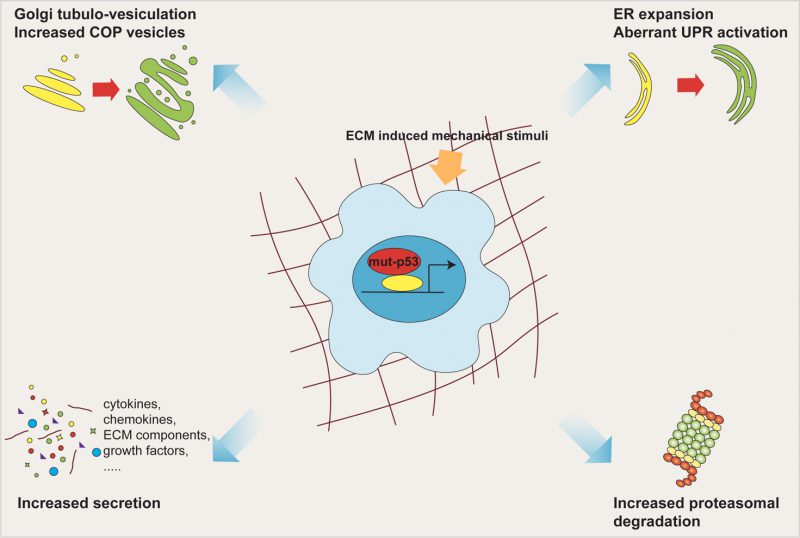Back to article: A mutant p53/Hif1α/miR-30d axis reprograms the secretory pathway promoting the release of a prometastatic secretome
FIGURE 2: Mut-p53 modifies the cell secretory pathway. Mut-p53, via miR-30d, induces major structural alterations of the secretory pathway components, including ER enlargement, increase in number of COP vesicles, and tubulo-vesiculation of the Golgi apparatus. These morphologic alterations, together with overwhelming of ER folding capacity and enhancement of proteasomal protein degradation, cause functional modification of the whole secretory pathway, culminating in increased trafficking rate. All these features are fostered by mechanical stimulation deriving from the ECM.

